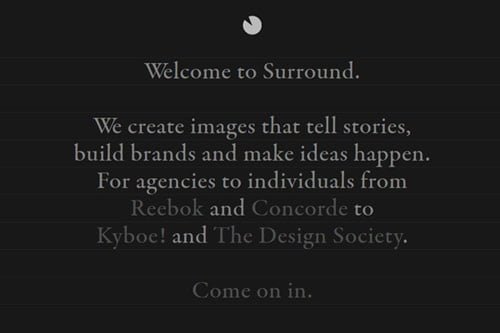
Good typography can be a foundation stone to a flourishing web design. Web design comprises of a lot of text and hence making the right mark for your typography is a major factor in the overall achievement of your site. The delicacy of fine typography can be a tricky thing for beginners to clutch but here we will discuss 8 tips that must help you to better your overall designs.
Make Your Type Selections Mean Something
We will get into categorizing fonts and also into how to pick them up in just a minute… but what we want you to understand the project you are working on. Sure, you can use just about any font to make a word – but what does that font end up making the word look like? More than any other design decision that you make, the font selection that you make give your site a character and the context. Pick them cautiously, and they will either help you converse with your viewers and readers or simply distract them.
Keep the Number of Different Fonts to a Minimum

Going by the general knowledge, once the web designers start using a particular font, they tend to stick to it. However using too many fonts can make the page look cluttered and untidy. Avoid using too many different fonts but combining 2 or 3 fonts together can be an good idea at times. Make sure to use them uniformly and consistently.
Line Spacing
Line spacing can be a major arrangement for a good method of typography. Line spacing is the spacing of the lines of your text. Move them apart, and it usually becomes more clear and easier on the eye. Your line spacing should be about 0.3em-0.5em bigger than your font size, even though it can differ depending on your design.
The Hierarchy

The idea of an ocular hierarchy is where the basics you want your reader to observe and percept primarily are the most important, whether that is made with the use of colour, size, font type or anything else. Typography can play its part in the complete hierarchy of your website, but it can in reality have its own.
Measure
Measure is a significant aspect too. Measure is the thickness of your text, and a feature that can settle on if your text is too wide or too narrow. Measure usually works next to line spacing to create the text easy to read for the user, by making the content to the range that the human eye contentedly read.
Alignment
Text arrangement is an essential factor too. There are commonly four kinds that you could potentially use. They are left, right, centre and justified. The golden rule for typography is to compose it decipherable, and you don’t have as enough control over it if you decide on for a justified text alignment. Justified text is essentially where the text is optimised to fill up the whole width of your element making the faultless rectangle of text. That might be excellent to be used in newspapers and print, but on the web, it just doesn’t work that well. One line might be a lot more packed than another line, but that is not something you can particularly control.
Scaling
Sure, you might have mastered in your typography by now, but some users could be screening with their browser window either zoomed in or out. As a result, your typography requires being able to scale fine when the user wants to zoom in or zoom out. This is extremely easy to test and control simply by scaling your browser.
Weight

In short, a font’s heaviness is all about its thickness. A font can be used in many weights, ranging from the light hairline to the ultra-black slab. Altering the weight of some text is commonly used to add some slight characterization to establish importance, like highlighting key words or an opening paragraph, when being used in a paragraph.
Typography is a really essential part of web design. When you look at a blog, you will see just how much text is there on the page and how much weight it can have on the entire website’s design. The above mentioned eight features are the most significant when it is about typography, and can severely alter the aesthetics of its design.
Choosing whether what fonts you want to use is a major decision and proper mixing is even more important. The amount of fonts, the measure, the alignment, the space between the lines of text, and the weight are all key character too. In a nutshell, your typography is somewhat that should be well contemplated and not just put together haphazardly.
All images source: Flickr







